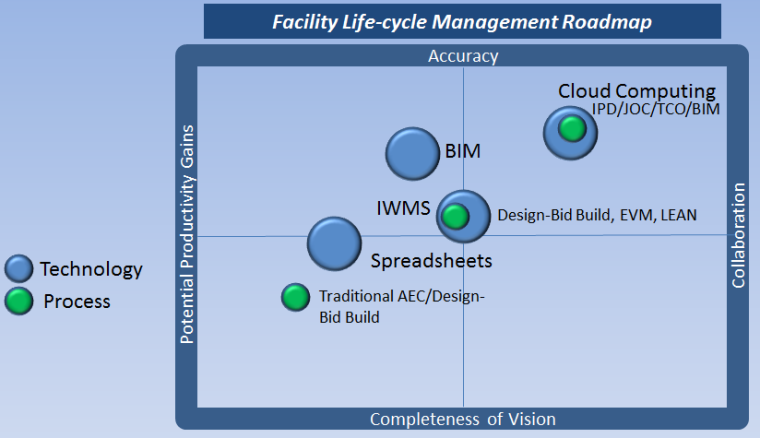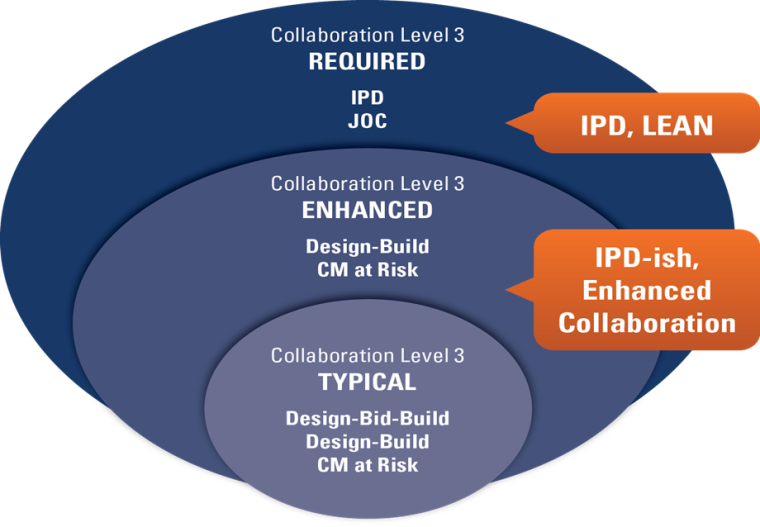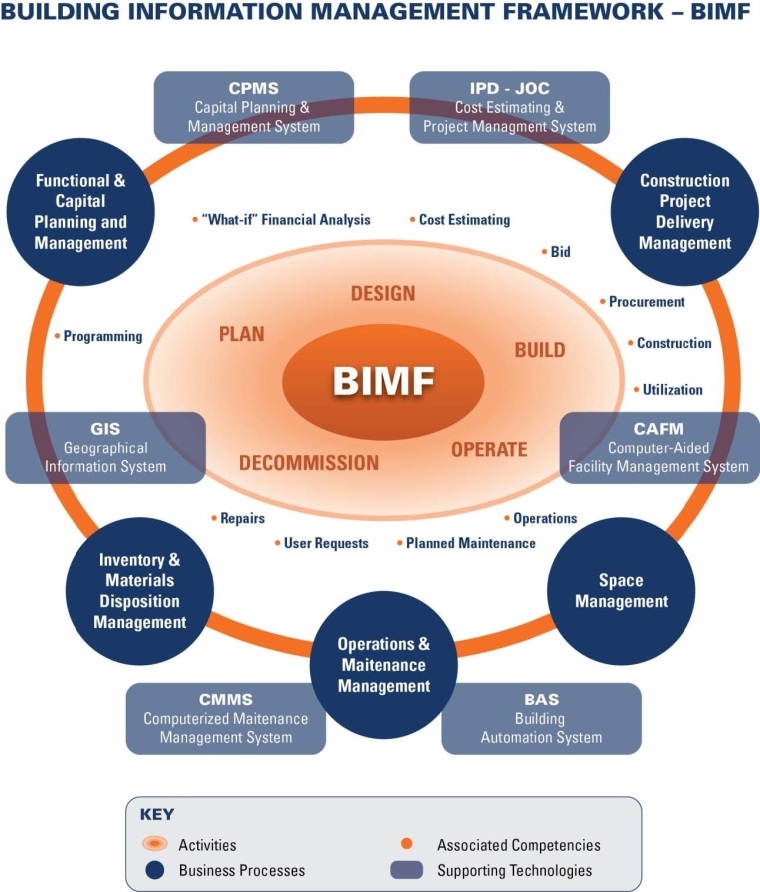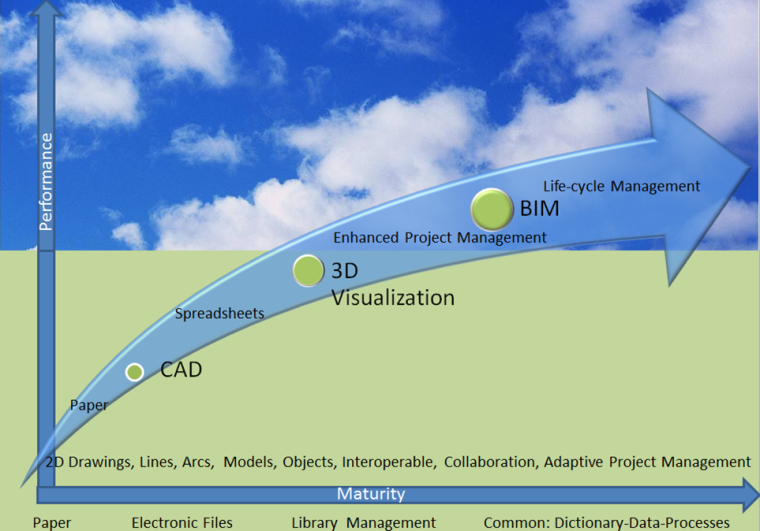BIM (Building Information Modeling) is the life-cycle management of the built environment supported by digital technology. 3D visualization vendors have marketed BIM poorly. Their focus has generally been upon 3D modeling and associated visual objects vs. the collection and use of valuable and enabling INFORMATION. Sure 3D visualization is a great tool, and a useful component of BIM, however, it’s not even the most important aspect.
Many, if not most organizations will require significant “change management” in order to successfully implement life-cycle management / BIM. Owners, AEs, Contractors, Oversight Groups, Business Product Manufacturers, and Software Vendors will need to adopt a better understanding of several, currently disparate knowledge domains / competencies and technologies and work towards efficient, transparent information sharing and collaboration among all area, professionals, and stakeholders.
Cloud computing / social media, BIM, and other ‘disruptive technologies’ combined with market demands driven but altered environmental and economic global landscapes will likely help to drive change, however, timing is uncertain.
There is a serious hole in the Architectural, Engineering, Construction and Owner Sectors’ level of understanding of building performance and legacy beliefs and process simply don’t work. – adaptation of work by Melanie Thompson of Get Sust!

We must initiate a wider discussion on what constitutes an appropriate, progressive life-cycle management of the built environment.
“We are moving from the era of ‘talking about deployment’ to the era of ‘deployment’ – over the next few decades there will be billions spent on energy-efficiency retrofit projects and it is crucial for policies to be underpinned by reliable technical data and strong evidence of the benefits that can be achieved.” – Bob Lowe, Deputy Director of University College London’s Energy Institute
The effectiveness and efficiency of this deployment will be dependent upon people asking the right questions. Efficient project delivery methods such as Job Order Contracting – JOC, a form of Integrated Project Development – IPD, that specifically targets renovation, repair, sustainability and minor new construction will be integral to successful BIM or life-cycle management based solutions. Collaboration and longer term relationships are primary components of JOC and equally central to BIM processes.

“… We are in a war-like situation and therefore have to accept a two-stage process: do the best we can with what we’ve got, plus keep on researching.” – Jim Skea, Chair – Sustainable Energy, Imperial College of London
Behaviors across all AECO (Architecture, Engineering, Construction, Owner) professions, building users, and oversight groups must change. Ad-hoc, inefficient, and adversarial construction delivery methods such as Design-Bid-Build represent a serious impediment to efficient use of resources. Additionally, life-cycle management must be addressed on portfolio and local levels within the context specific buildings (or structures), inclusive of type, activity, and utilization. For this we need a fundamental shift in approach, applying the proven as well as yet to be developed methodologies and tools developed.
The impacts of social media and social sciences will expand exponentially. ” Conventional building researchers are ‘positivistic’ (measuring and monitoring objects and systems) while the social scientists, who inhabit a world of case studies and qualitative data, are ‘interpretivist’. Interpretivist research include studies of:
- occupants and their engagement with technologies;
- technologies and policy mechanisms in-use (implementation); and
- changes in business models, supply chains, the distribution of risk and responsibility, professional identities, the division of labor and so on.

September 2012 – via http://www.4Clicks.com – Premier cost estimating and efficient project delivery software for JOC, Job Order Contracting, SABER, IDIQ, MATOC, SATOC, POCA, BOC, MACC …. featuring exclusively enhanced 400,000 line item RSMeans Cost Data with modifiers and full descriptions.



